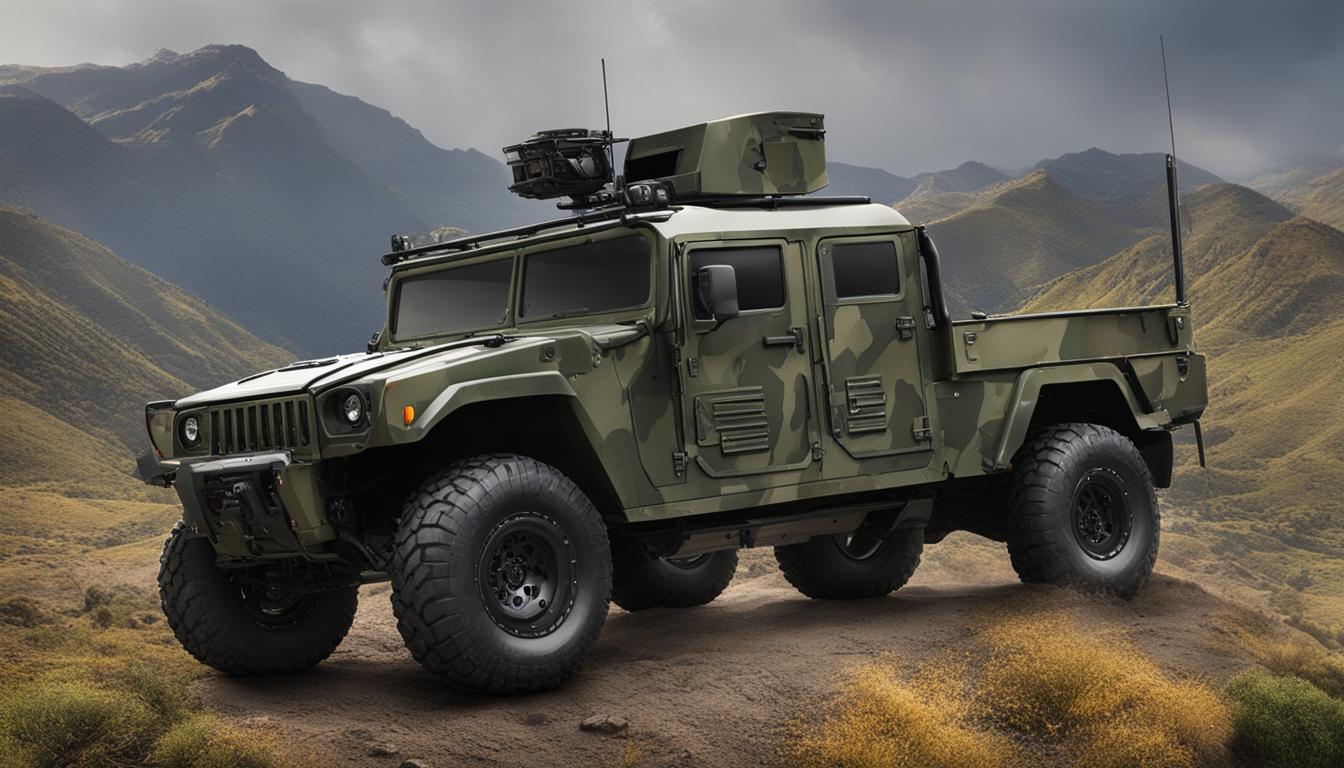Introduction
Winter off-roading is a thrilling and adrenaline-pumping activity that combines the love for adventure with the beauty of snowy landscapes. It offers a unique opportunity to explore remote areas and enjoy the serenity of nature during the winter months. Whether it’s cruising through snow-covered trails, conquering steep slopes, or simply indulging in the joy of carving fresh tracks, winter off-roading provides an exhilarating experience for outdoor enthusiasts.
In this article, we will delve into the fascinating world of winter off-roading and explore two popular vehicles that dominate this exciting realm: snowmobiles and timber sleds. These machines are specifically designed to navigate challenging terrains and offer an unparalleled sense of freedom amidst icy wildernesses.
Brief Overview of Winter Off-Roading
Winter off-roading entails traversing through various types of terrain covered in ice or deep snow. It requires specialized vehicles that can handle the slippery conditions while providing ample power and control to maneuver through unpredictable landscapes. One of the most appealing aspects of winter off-roading is its versatility.
From leisurely rides over frozen lakes to adrenaline-fueled expeditions up treacherous mountain slopes, there is something for every thrill-seeker. The wide range of terrains available ensures that each outing brings forth a new challenge and exploration opportunity.
Introduction to Snowmobiles and Timber Sleds
Snowmobiles are motorized vehicles specifically designed for winter travel over snow-covered terrain. They feature a low-pressure track driven by an engine-powered system, allowing them to effortlessly glide across various surfaces while providing stability and control.
Snowmobiles typically accommodate one or more riders depending on their design, making them ideal for group adventures or solo excursions into snowy wonderlands. On the other hand, timber sleds provide a unique alternative to snowmobiles.
A timber sled is essentially a conversion kit that can transform a standard off-road motorcycle into a winter-friendly machine. It replaces the front wheel of the motorcycle with a ski and attaches a rear track, enabling it to navigate snowy trails with agility and precision.
While snowmobiles have been around for decades and are well-established in the world of winter off-roading, timber sleds have gained popularity in recent years due to their versatility and compatibility with existing motorcycles. In the following sections, we will dive deeper into the features, pros, and cons of both snowmobiles and timber sleds to provide an in-depth understanding of their capabilities during winter off-roading adventures.
Snowmobiles: The Versatile Winter Machines
Definition and purpose of snowmobiles
Snowmobiles, also known as sleds or snow machines, are specialized vehicles designed to travel over snowy terrain. They consist of a seat for the operator, handlebars for steering, and a track-driven propulsion system.
Snowmobiles are built to handle various winter conditions, from groomed trails to deep powder and icy surfaces. Their primary purpose is to provide transportation and recreational enjoyment in snowy environments.
Key features and components
Snowmobiles incorporate several essential components that contribute to their overall performance in winter off-roading.
Engine types: 2-stroke vs 4-stroke
One crucial aspect of snowmobile design is the engine type. Snowmobile engines come in two varieties: 2-stroke and 4-stroke.
A 2-stroke engine offers lighter weight, higher power-to-weight ratio, and quicker acceleration. On the other hand, a 4-stroke engine provides better fuel efficiency, reduced emissions, and smoother power delivery.
Track design: deep lug vs shallow lug
The track is an integral part of a snowmobile’s propulsion system. It consists of multiple rubberized paddles or lugs that grip the snow surface to propel the sled forward. Track design can vary in terms of lug depth—deep lug tracks offer superior traction in deep powder but may have more drag on groomed trails compared to shallow lug tracks designed for speed.
Suspension systems: independent vs coupled
Snowmobile suspension systems play a vital role in providing a smooth ride over rough terrain. Independent suspension allows each ski or track arm to move independently for better weight distribution and improved handling on uneven surfaces. Coupled suspension systems connect both skis or arms together with an additional linkage system, offering increased stability and better cornering performance.
Pros and cons of snowmobiles in winter off-roading
Speed and maneuverability on various terrains
One of the significant advantages of snowmobiles is their ability to achieve high speeds and maneuver with agility on different types of terrain. With their powerful engines, lightweight design, and specialized tracks, snowmobiles can conquer deep powder, icy slopes, and tight corners with ease.
Carrying capacity for passengers and cargo
Snowmobiles are designed not only for solo riders but also to accommodate passengers or transport cargo. Many models have seating options for one or two additional riders and can include cargo racks or trailers. This versatility makes snowmobiles suitable not only for recreational purposes but also for practical tasks such as hauling supplies in remote winter locations.
Environmental impact
While snowmobiling provides thrilling experiences in winter wonderlands, it’s essential to consider the environmental impact. Snowmobile engines emit carbon dioxide (CO2) and other pollutants that can contribute to air pollution. However, advancements in engine technology have led to more eco-friendly options with reduced emissions.
Additionally, responsible riding practices such as sticking to designated trails help minimize disturbances to wildlife habitats and protect fragile ecosystems. Snowmobiles are highly versatile machines designed specifically for winter off-roading adventures.
They boast various features such as different engine types (2-stroke or 4-stroke), track designs (deep lug or shallow lug), and suspension systems (independent or coupled) that cater to the diverse needs of riders. Snowmobiles offer speed, maneuverability on various terrains, ample carrying capacity for passengers and cargo alike while acknowledging the importance of minimizing their environmental impact through improved engine technology and responsible riding practices.
Timber Sleds: The Rising Stars of Winter Off-Roading
Definition and purpose of timber sleds
When it comes to winter off-roading, timber sleds are gaining popularity as an exciting alternative to traditional snowmobiles. A timber sled, also known as a snow bike or snow dirt bike, is essentially a conversion kit that transforms a motorcycle into a versatile winter machine. The purpose of a timber sled is to provide riders with the thrill and agility of riding a dirt bike, while also offering the ability to navigate through deep snow and challenging terrains.
Key features and components
A timber sled consists of several key components that make it suitable for winter off-roading adventures. These include the ski, track, spindle, suspension system, and frame modifications.
The ski is typically wider and shorter than those found on traditional snowmobiles, providing better maneuverability in tight trails or deep powder. The track is what enables the timber sled to glide over the snow effortlessly.
It usually features deep lugs for enhanced traction on various terrains. The spindle connects the ski to the front suspension system and allows for smooth steering control.
In terms of suspension systems, timber sleds often have modified setups that are specifically designed for winter riding conditions. These modifications improve stability and absorb shocks effectively when encountering uneven surfaces or obstacles.
Compatibility with different motorcycles
One appealing aspect of timber sleds is their compatibility with different types of motorcycles. Whether you own a dirt bike or an adventure bike, there’s likely a conversion kit available that will suit your specific ride. Dirt bikes are typically lightweight with nimble handling characteristics perfect for tight trails or technical maneuvers in deep snow conditions.
On the other hand, adventure bikes offer more comfort during longer rides and often come equipped with larger engines suitable for tackling challenging terrains at higher speeds. When considering a timber sled conversion kit, it’s important to choose one that matches the specifications and engine displacement of your motorcycle to ensure proper performance and compatibility.
Pros and cons of timber sleds in winter off-roading
Timber sleds offer several advantages for winter off-roading enthusiasts. First and foremost, their enhanced agility on tight trails or deep snow is notable.
The combination of a dirt bike’s maneuverability with the added traction from the track allows riders to navigate through narrow paths or densely forested areas that would be challenging for traditional snowmobiles. Additionally, timber sleds excel at adapting to changing terrain conditions.
With their lightweight nature, they are better able to handle uneven surfaces, making them suitable for off-trail exploration or backcountry adventures. This versatility allows riders to explore new areas that may be inaccessible with larger and bulkier snowmobiles.
However, it’s important to note that timber sleds do have limitations compared to snowmobiles. One significant drawback is their limited carrying capacity.
While snowmobiles can accommodate multiple passengers and carry larger amounts of cargo, timber sleds are generally designed for single riders with minimal storage options. Timber sleds have emerged as exciting alternatives in winter off-roading due to their ability to transform motorcycles into versatile winter machines.
They offer enhanced agility on tight trails or deep snow while adapting well to changing terrain conditions. However, their limitations in carrying capacity should be taken into account when considering the best option for your winter adventures.
Comparison between Snowmobiles and Timber Sleds:
A Performance Factors:
When it comes to performance, both snowmobiles and timber sleds have their own strengths. In terms of acceleration capabilities on various terrains, snowmobiles often take the lead. With their powerful engines and specially designed tracks, they can zoom through open fields or icy surfaces with impressive speed and agility.
Snowmobiles excel in providing a thrilling ride, making them a popular choice for adrenaline junkies who crave high-speed adventures. On the other hand, timber sleds offer exceptional handling characteristics, especially in corners or uneven surfaces.
Their lightweight design and unique track system allow for quick maneuverability, making tight turns a breeze. Whether you’re navigating through dense forests or winding trails, timber sleds provide precise control over the machine’s movements.
This increased maneuverability gives riders an advantage when it comes to exploring challenging terrains that demand sharp cornering skills. Moreover, when it comes to climbing steep inclines or tackling deep powder conditions, both snowmobiles and timber sleds demonstrate their own set of advantages.
Snowmobiles are often equipped with powerful engines that generate significant torque, allowing them to conquer steep hills with relative ease. Meanwhile, timber sleds utilize their lightweight construction and specialized track systems to effortlessly glide over deep powder snow without getting stuck.
B Terrain Suitability:
In terms of terrain suitability, both snowmobiles and timber sleds have different preferences based on their design characteristics. When it comes to conquering deep powder conditions, timber sleds have the upper hand due to their lightweight build and specialized track systems. These features allow them to effortlessly float on top of powdery snow rather than sinking into it like heavier snowmobile models would.
On groomed trails or packed snow surfaces typically found in popular winter destinations such as ski resorts or maintained trail networks, snowmobiles excel in providing a smooth and comfortable ride. With their larger footprint and sophisticated suspension systems, they can cruise along groomed trails with stability and ease, allowing riders to enjoy a more leisurely experience.
Conclusion:
In the battle between snowmobiles and timber sleds for winter off-roading supremacy, both machines have their own unique advantages. Snowmobiles boast powerful engines and superior speed capabilities, making them an adrenaline-fueled choice for those seeking high-octane adventures.
On the other hand, timber sleds shine with their nimble handling characteristics and ability to conquer deep powder conditions. Whether you opt for the raw power of a snowmobile or the agile maneuverability of a timber sled, both choices offer thrilling experiences in the winter wonderland.
So, embrace your inner adventurer and hit the snowy trails with confidence knowing that no matter which machine you choose, excitement awaits at every turn. Happy riding!
 Skip to main content
Skip to main content


